Alaska is the largest and wildest state in the United States. With its magnificent natural beauty, endless glaciers, snow-covered mountains, pristine national parks, and rich wildlife, it offers one of the most fascinating geographies in the world. Here, the power and grandeur of nature leave people in awe. Visitors can hike among massive glaciers in Alaska, observe brown bears in their natural habitats, or have the chance to watch the unique dance of the Northern Lights.
In addition, Alaska has great cultural richness. The ancient cultures of the natives, historic towns from the Gold Rush era, Russian heritage, and fishing villages reveal themselves in different corners of the state. Sea voyages, whale watching, and fishing tours in Alaska also offer unforgettable experiences for visitors. With all these features, Alaska is an indispensable destination for both nature lovers and those who want to make cultural discoveries.
1. Denali National Park and Preserve (formerly Mount McKinley)
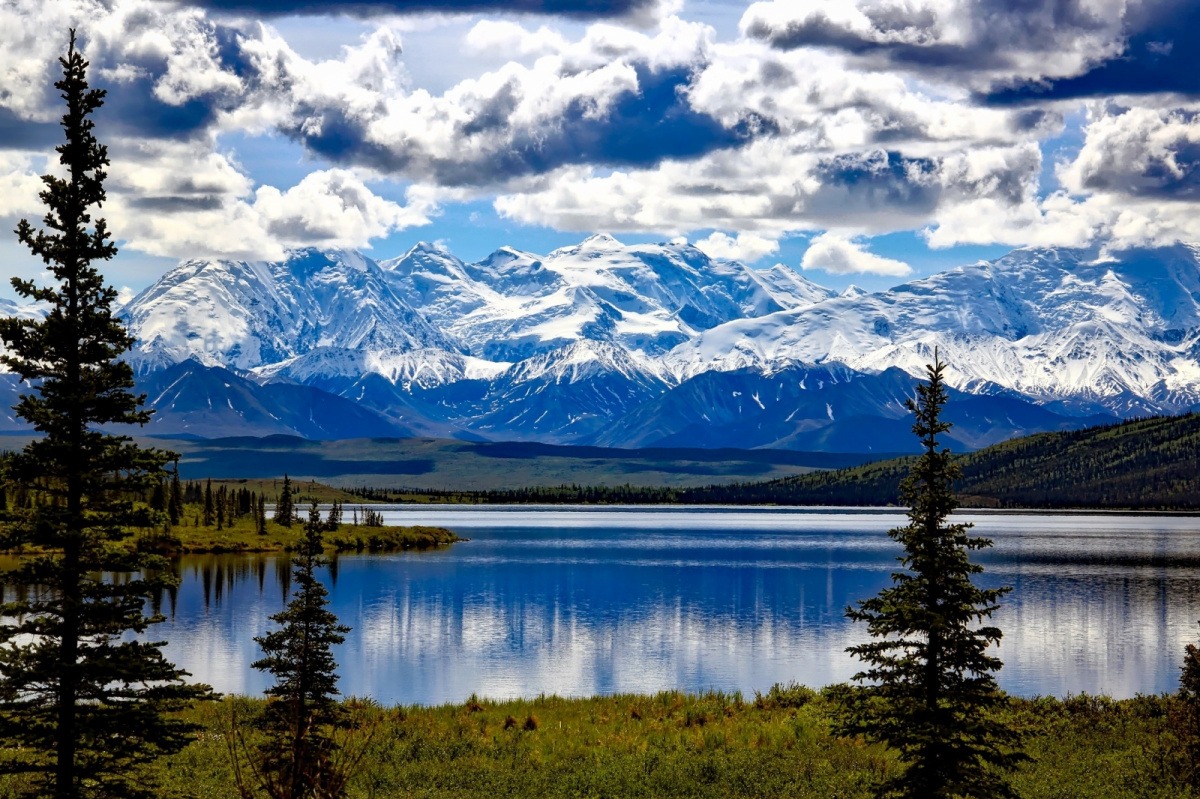
Denali National Park and Preserve is a vast wildlife area of approximately 6 million acres (2.4 million ha) surrounding Denali, the highest peak in North America (formerly known as Mount McKinley). Established in 1917 as Mount McKinley National Park, it was expanded in 1980 and renamed Denali National Park and Preserve. From the park entrance extending through ecosystems from taiga to tundra, it offers diversity such as forested valleys, glaciers, alpine meadows, and rocky peaks. Visitors generally travel along the only road, Park Road, by bus tours and have the opportunity to observe bears, moose, caribou, Dall sheep, wolves, and more than 150 bird species in this unique geography.
Denali’s most striking feature is its height of 6,190 meters, making it the highest point in North America; in some measurements, it reaches nearly 5,500 meters of elevation gain from base to summit, comparable to Mount Fuji. The park offers visitors both marked hiking trails (Mountain Vista, Savage River) and the possibility of permit-free, unmarked off-trail exploration. This freedom provides adventurers with a true wilderness experience by allowing them to create their own routes, while those seeking comfort can choose options such as regular bus tours, flightseeing tours, sled dog demonstrations, and accommodation opportunities in nearby centers.
2. Kenai Fjords National Park
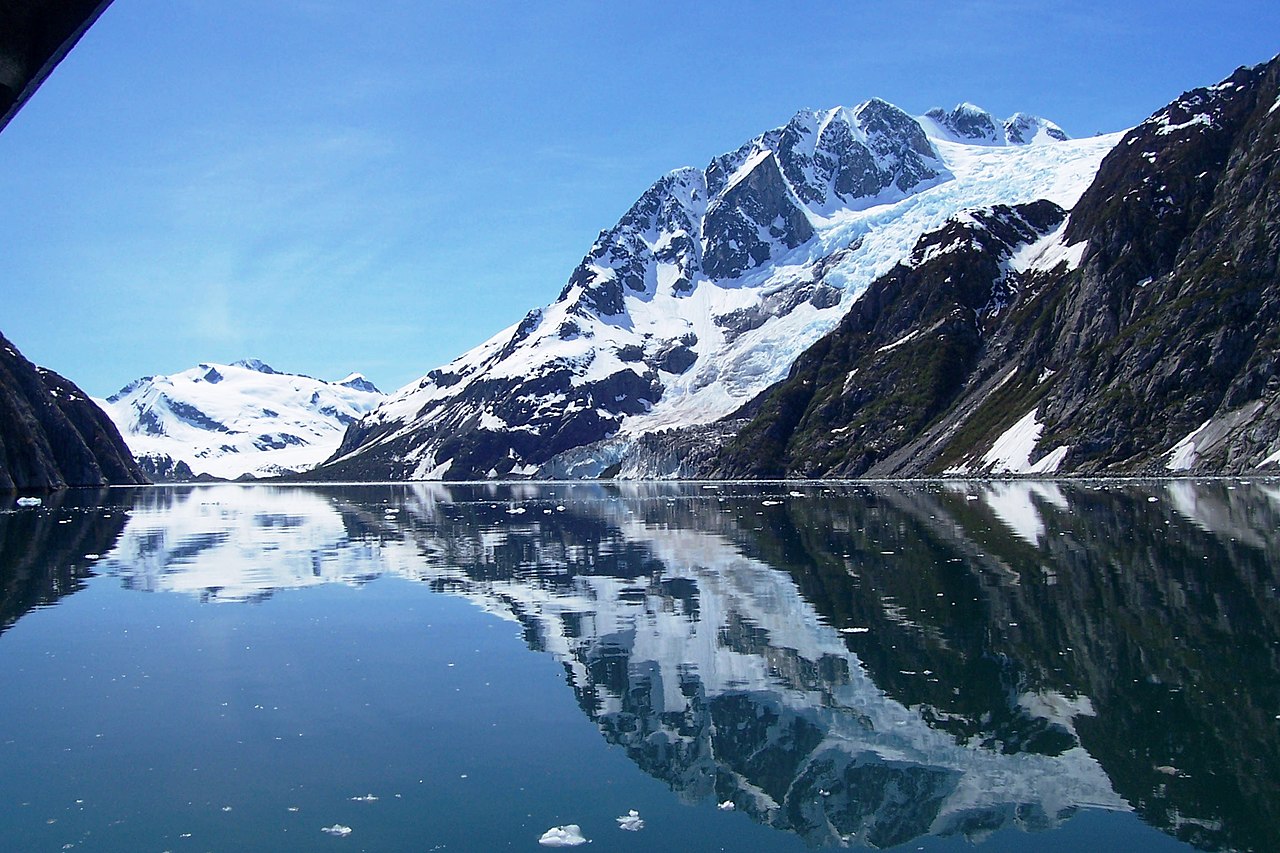
Kenai Fjords National Park is located on the Kenai Peninsula in south-central Alaska and, with an area of approximately 1,047,000 hectares, contains around 38 glaciers flowing from the Harding Icefield to the sea. The glacier-carved fjords, sharp rocky coastlines, and rich marine life make the park fascinating both geographically and ecologically. Visitors generally head toward the fjords on boats departing from Seward harbor; especially on tours where rusty-colored glaciers like Aialik, Northwestern, and Holgate are seen up close, the magnificent “calving” moments — when pieces of ice break off and fall into the sea — are frequently witnessed. It also offers opportunities to observe many forms of wildlife such as whales, seals, sea lions, sea otters, and giant seabirds.
The only land-accessible area in the park includes short hiking trails around Exit Glacier, while for those wanting more challenging exploration, longer and more demanding routes such as the Harding Icefield Trail are available. Alternative activities include ferry trips, kayaking, short flightseeing tours, winter sports (such as skiing, snowshoeing, and dog sledding). Kenai Fjords, as a small but powerful national park, stands out as a unique natural wonder for those who want to experience the unmatched combination of glaciers, wildlife, and marine fjords.
3. Glacier Bay National Park
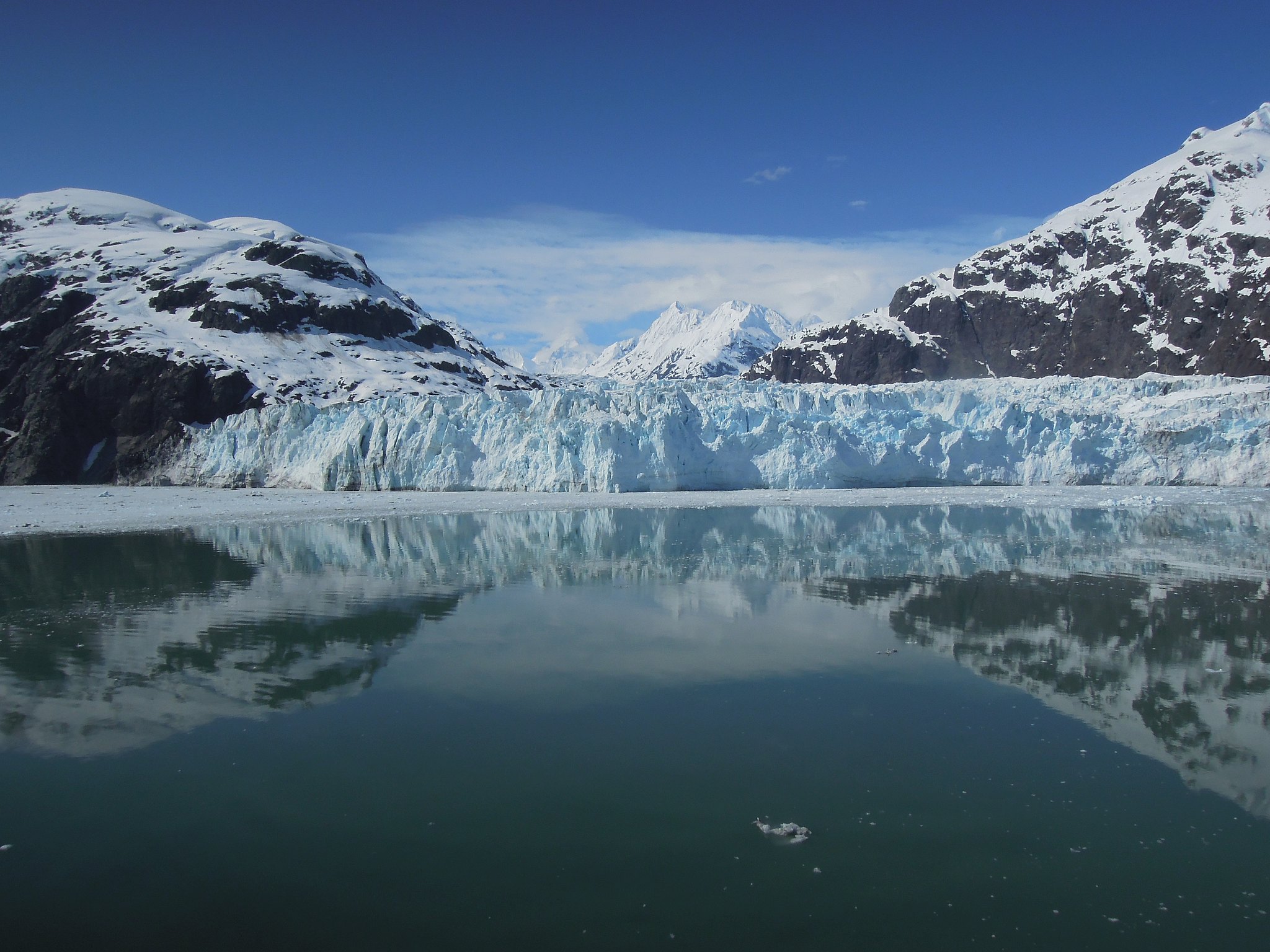
Glacier Bay National Park and Preserve is located on the southeastern coast of Alaska, west of Juneau, and spans a vast wildlife area of approximately 3.3 million acres (about 1.3 million hectares). Designated as a national monument in 1925 and as a national park in 1980, this area was included on the UNESCO World Heritage list in 1992. Glacier Bay hosts over 1,000 glaciers, deep ice-carved fjords, lush forests, and a rich glacier-fed ecosystem. Especially tidewater glaciers like Margerie and Grand Pacific attract great scientific and visual interest with the “calving” events, where huge chunks of ice break off into the sea.
Much of the park experience is sea-oriented: more than 90% of visitors explore the area on cruise ships arriving via the Inside Passage or on boat tours departing from Bartlett Cove. It offers endless adventure with daily boat tours, marine wildlife safari tours, kayaking, whale watching, and guided hikes among the glaciers. In addition, the park is home to around 40 mammal species, including orcas, humpback whales, sea lions, sea otters, black bears, mountain goats, moose, and wolves; and with over 280 bird species, it is extremely rich in wildlife. Glacier Bay is a true natural wonder for those who want to experience the magnificent combination of fjords, glaciers, and wildlife.
4. Mendenhall Glacier (near Juneau)
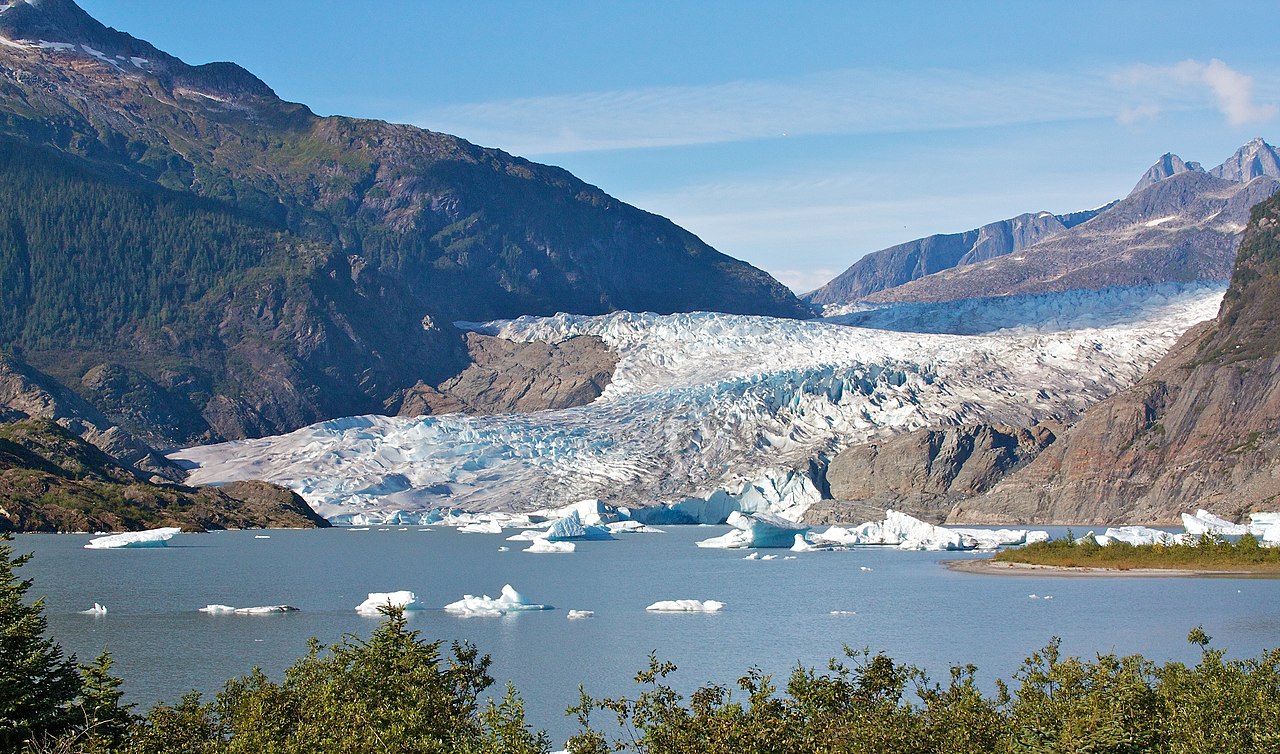
Mendenhall Glacier is a magnificent glacier river 13.6 miles (22 km) long, located in the Mendenhall Valley about 20 km (12 miles) north of the state capital, Juneau. This glacier lies within the boundaries of Tongass National Forest, at the heart of the 2,353-hectare Mendenhall Glacier Recreation Area. Described as one of the retreating modern glacier masses, Mendenhall recedes by about 30–45 meters each year, creating dramatic effects on underwater and coastal geomorphology. In front of the glacier, Mendenhall Lake has formed, measuring 1.5 miles (2.4 km) long, 1 mile (1.6 km) wide, and about 65 meters deep.
The most popular visitor spot in Mendenhall is the panoramic view of the glacier from the large windows at the Visitor Center. Here, digital presentations, exhibits, and ranger-guided programs are offered to visitors, with an entrance fee of about $5 applied during the summer season from May to September. Among the elegant walking paths, the most well-known are the wheelchair-friendly 0.5 km Photo Point Trail, the approximately 3 km flat path leading to Nugget Falls, and interpretive routes such as The Trail of Time. Those who want more can connect more deeply with nature through unique activities like exploring ice caves, helicopter glacier landings, canoeing/rafting, and skiing. Especially on clear and sunny days, the “calving” moments when ice breaks off and falls into the lake create unforgettable visual moments.
5. Anchorage Downtown & Coastal Trail
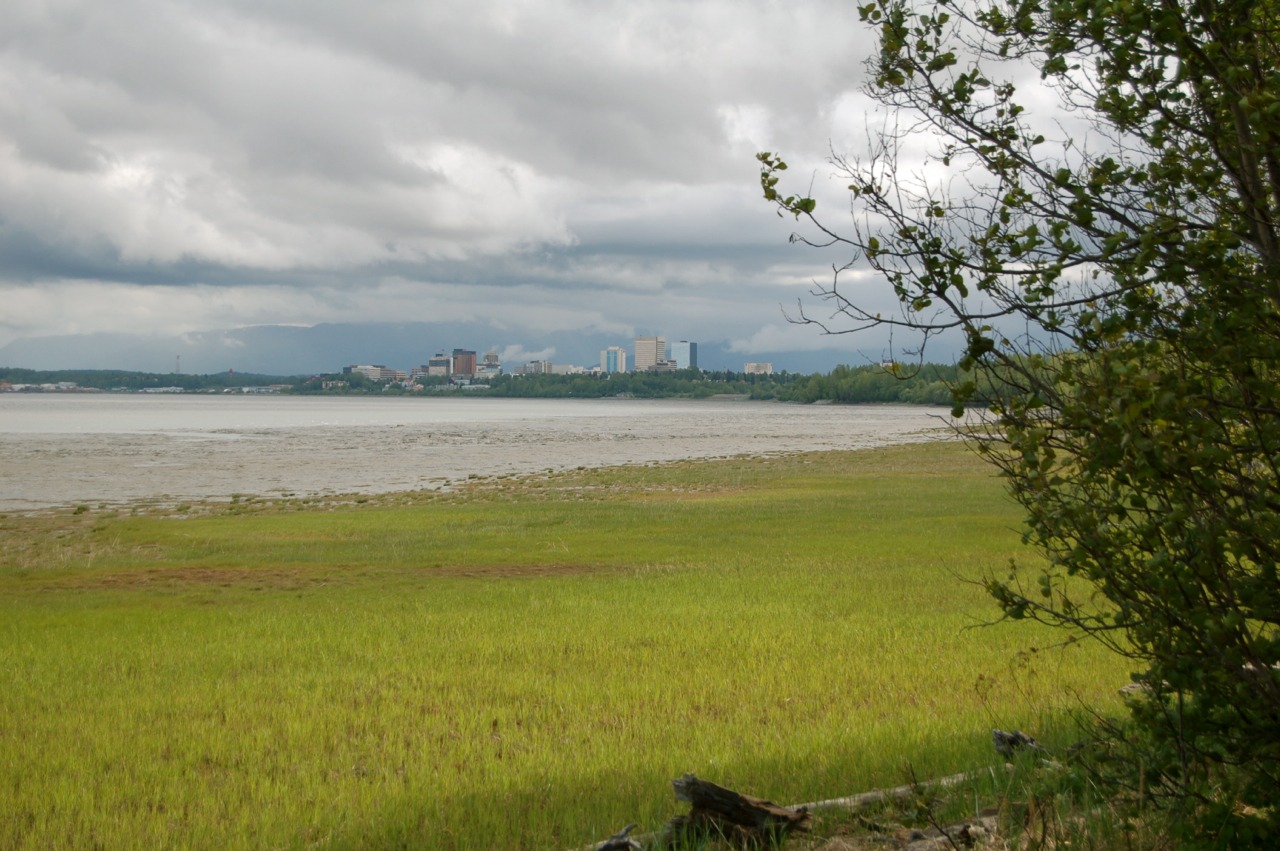
Starting from the heart of Anchorage and following the shores of Cook Inlet, the 11-mile (approximately 18 km) Tony Knowles Coastal Trail allows for activities such as hiking, biking, running, skating, and cross-country skiing throughout the year. The trail begins next to the 2nd Avenue train station and extends to the extraordinary nature of Kincaid Park. Along the route, there are rest stops such as Westchester Lagoon, Earthquake Park, and Point Woronzof; among these, Point Woronzof is ideal for watching aircraft landings on the runway and enjoying magnificent sunsets. From many points along the trail, it is possible to see Denali, Mount Susitna (“Sleeping Lady”), and beluga whales in Cook Inlet, and frequently encountered wildlife includes species such as moose and eagles.
The trail is open to everyone year-round and is also excellent for activities in winter such as cross-country skiing, skijoring, or fat-bike riding. In the summer season, bike rental options are also quite common; especially Pablo’s Bike Rentals stands out as a popular choice with a daily fee of around $30. Visitors often break up the route to take short hikes from downtown lasting a few hours, while adventurers go the entire trail back and forth. The panoramic views offered along the trail provide a unique experience where the modern city silhouette blends with nature.
6. Fairbanks (Northern Lights and cultural activities)
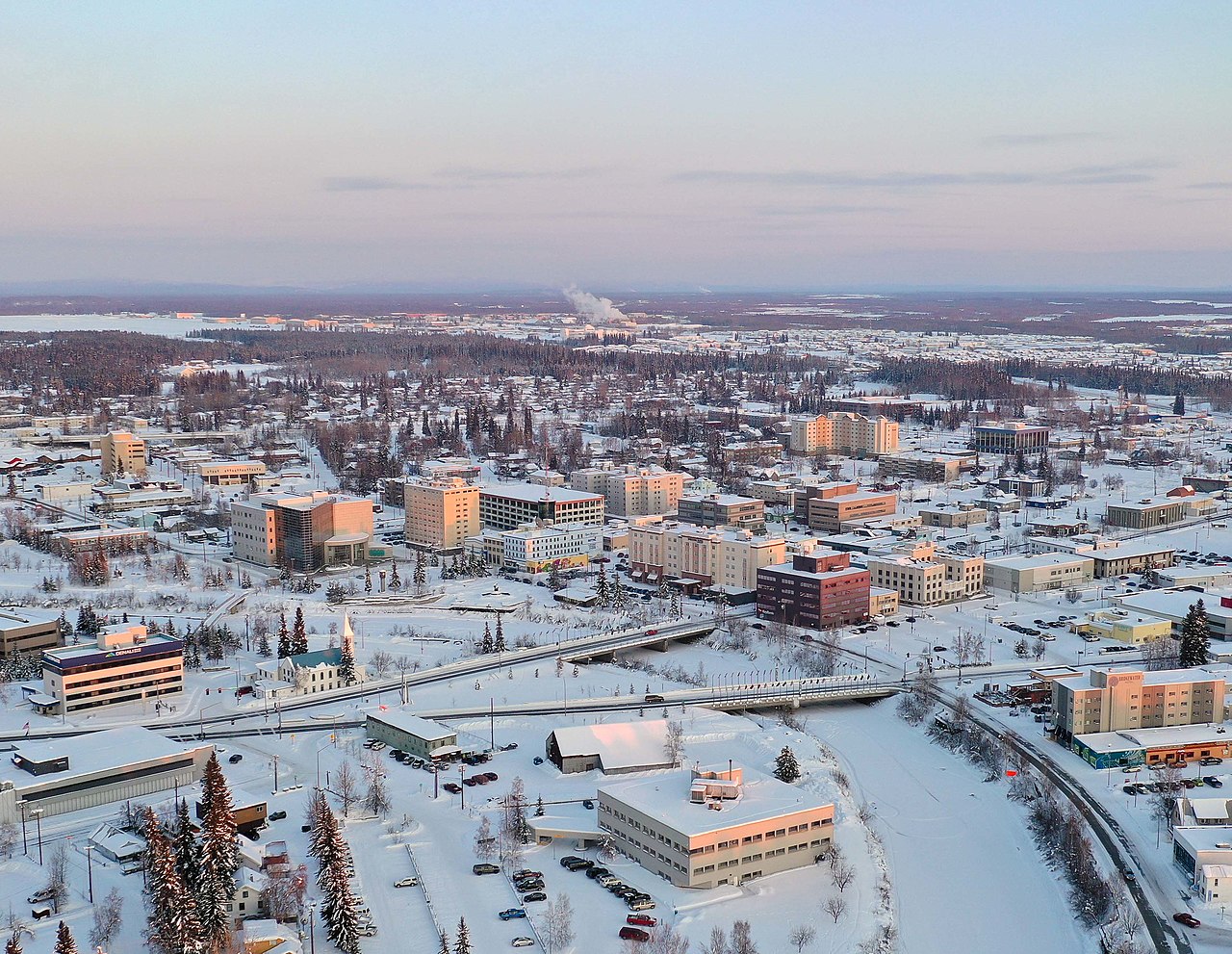
Fairbanks, Alaska, is one of the best places in the world to observe the Northern Lights (Aurora Borealis). The city lies directly under the “Auroral Oval,” a belt of high aurora activity; therefore, from late August to mid-April, on average four out of every five nights with outdoor activities feature an aurora show. In addition, Fairbanks’ distance from coastal areas and its low light pollution allow for a clear view of the sky. It is even possible to see the lights from downtown; however, the ideal experience is offered outside the city in warm “aurorium” yurts or domed cabins, spending the night by sled, arranging snowmobile tours, or combining it with ice fishing and relaxation at Chena Hot Springs.
Fairbanks is also a culturally rich city. The Native Art Center at the University of Alaska Fairbanks, along with many Native art events and museums such as the Athabaskan Fiddle Festival, are hosted here. In the summer, you can witness the history of gold seekers and endless daylight hours through events like the Golden Days Festival and the Midnight Sun Run. In winter, cultural and nature-focused activities offered by the city—such as dog sled tours, ice fishing, snow baths after sauna, and Alaska Native “aurora storytelling”—make Fairbanks not only a center for a natural phenomenon but also a powerful cultural experience.
7. Seward and Resurrection Bay
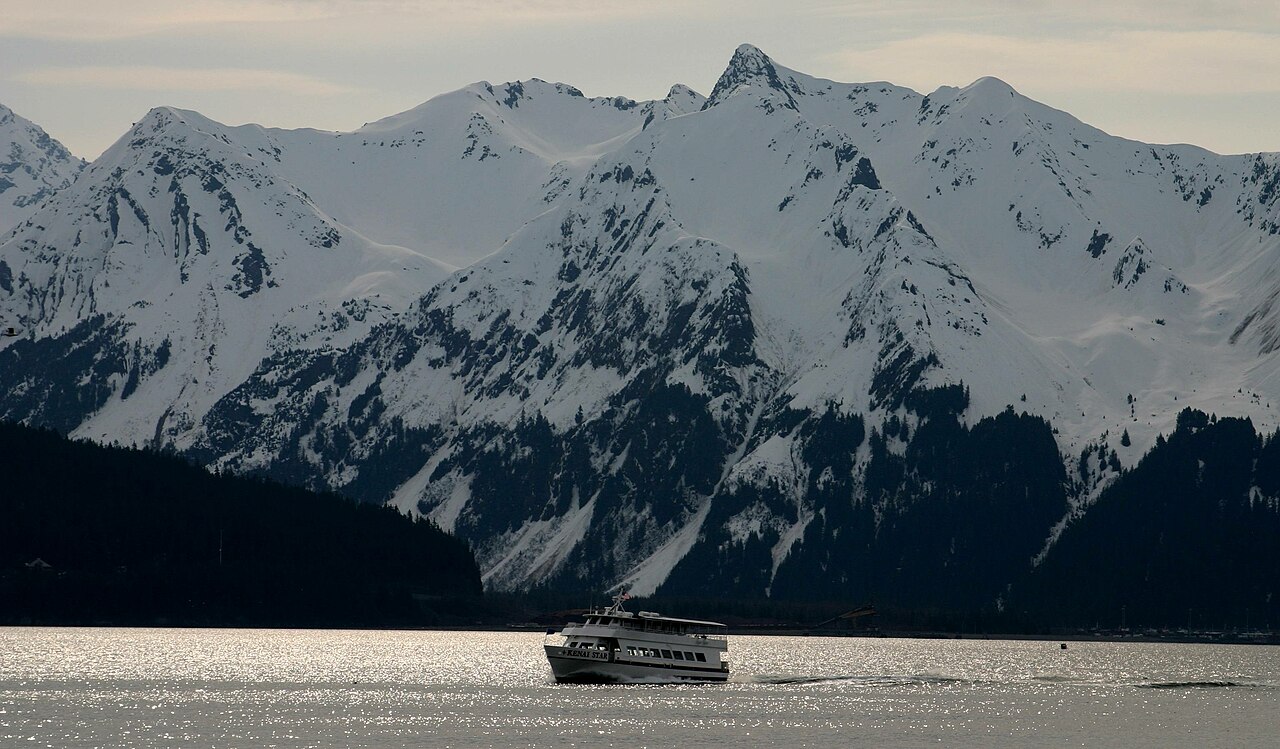
Seward is a charming port town located at the southern tip of the Kenai Peninsula, on the shores of Resurrection Bay. Surrounded by magnificent mountains and filled with glaciers, this fjord has ice-free waters year-round, making it suitable for ship and boat access and earning it the title “Gateway to the Kenai Fjords.” The Alaska SeaLife Center, located right on the town’s waterfront, offers marine mammal rehabilitation and public education, while also supporting activities such as nature hikes, fishing, sled tours, and skiing.
Resurrection Bay tours depart from Seward on boats traveling along the fjord, offering dramatic sea views combined with wildlife observation. In addition to animals such as puffins, seals, marine mammals, orcas, and whales, Fort McGilvray from World War II can be seen on Caines Head. Moreover, sea kayaking tours with close-up views of the rocks, water-taxi trips to hidden coves, and special small-group observation trips compared to large boats are also quite popular.
Seward and Resurrection Bay offer a balanced experience for both nature lovers and history enthusiasts: dramatic glaciers, rich marine life, and war stories all await discovery together in this fascinating corner of Alaska.
8. Katmai National Park (for bear viewing)
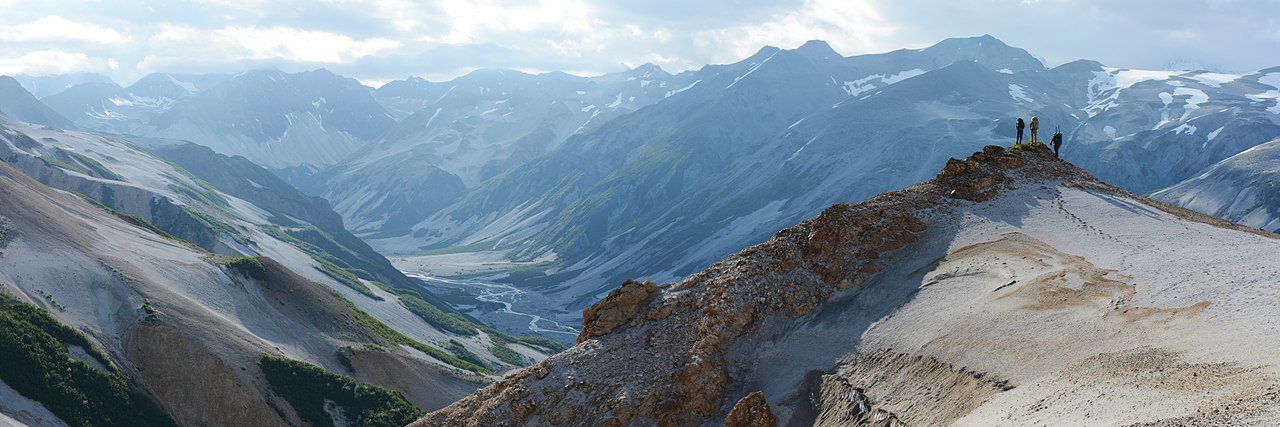
Katmai National Park and Preserve is known worldwide as the capital of brown bear viewing. With an area of approximately 4 million acres, Katmai is home to more than 2,200 bears, making it one of the densest bear habitats on the Alaska Peninsula. The most popular viewing spot is at Brooks Falls; live broadcasts from here show the bears catching delicious salmon in real time. Visitors can reach Brooks Camp by small planes and have the opportunity to watch the bears’ dramatic fishing moments from wooden platforms just a few meters away.
The rhythm of life in the park is shaped especially in mid-summer, when the bears feed on salmon to prepare for winter. July is the busiest period; between thirty and seventy bears can be seen around the same river at the same time. During this period, educational events such as “Fat Bear Week” celebrate the bears’ preparation for hibernation with public participation. The park also offers bear viewing opportunities in coastal areas such as Hallo Bay; here, with cabin accommodations, fascinating photos can be taken while sharing space with the bears as they hunt sedge and salmon. Katmai is a unique experience for nature photographers, wildlife watchers, and adventurous travelers, offering both a naturally functioning fishing system and unforgettable encounters with bears at a safe distance.
9. Kodiak Island
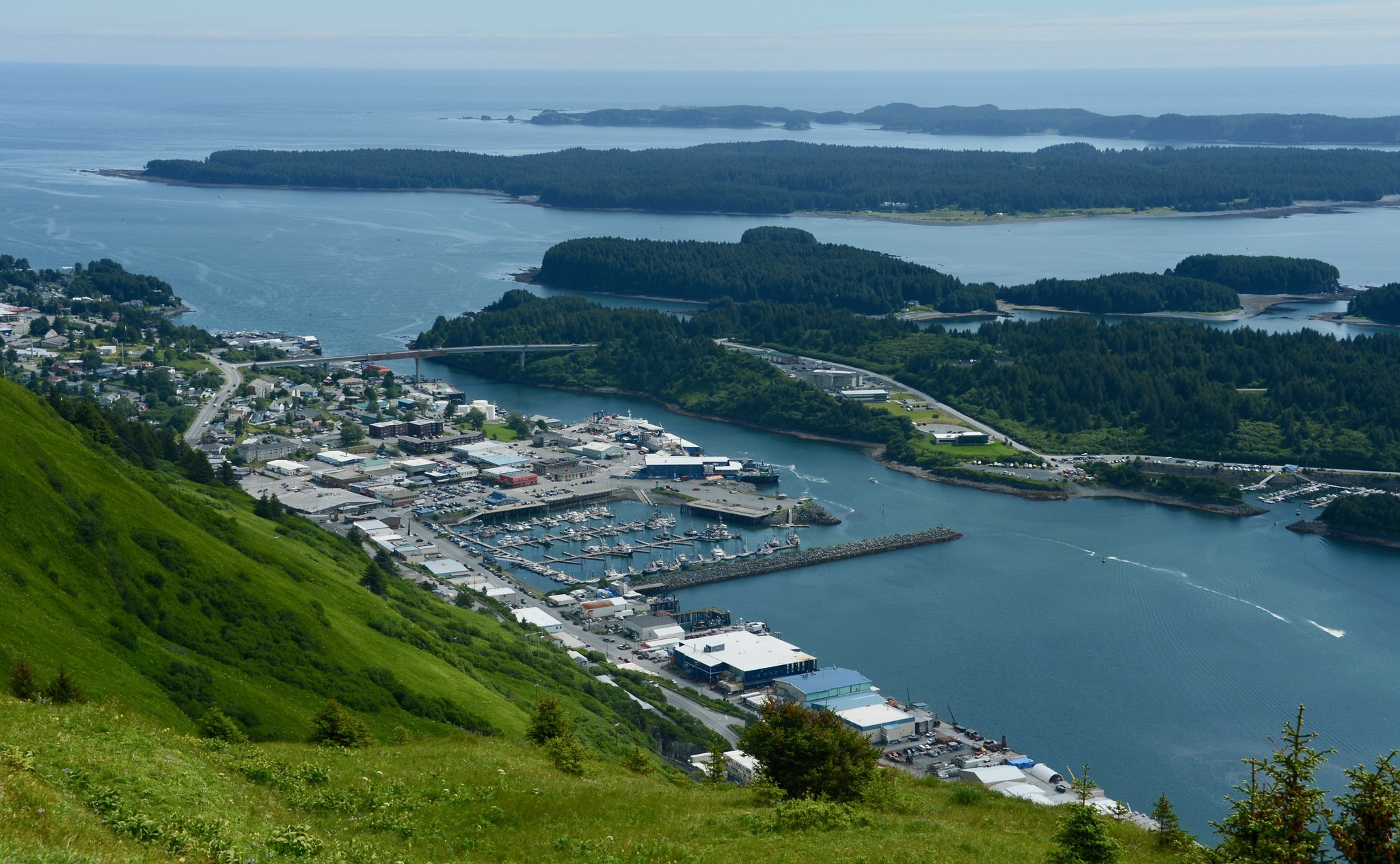
Kodiak Island is Alaska’s second-largest island and is also known as the “Emerald Isle” — a name that evokes its lush forests and fertile valleys, resembling a hidden paradise nestled in nature. Located in the center of the island, the town of Kodiak has a vibrant life as a fishing and transportation hub. Access to the island is generally provided by regular flights from the Anchorage area or by Alaska Marine Highway ferry services. The road network is about 160 km long, making it possible to reach natural beauties and local communities in different corners of the island.
If you are interested in geese and wildlife, Kodiak Island is an ideal destination. The island hosts one of the densest Kodiak brown bear populations in the world — these gigantic bears can reach twice the size of ordinary brown bears and are spread throughout much of the island with a density of about 270 bears per mile. The Kodiak National Wildlife Refuge covers most of the southwest of the island and offers a rich ecosystem filled with mountains, glaciers, forests, and rivers. Activities such as fishing, bear viewing, sea and riverside kayaking tours, drone and flightseeing tours are also quite popular.
If you are in search of historical and cultural exploration, you can gain deep insight into the region’s Native heritage and Russian era at the Alutiiq Museum and the Kodiak History Museum, both belonging to the Alutiiq Tribe. In addition, you can join the life rhythm of the islanders with community events such as the monthly Kodiak Crab Festival; this festival coincides with Memorial Day weekend and is an attractive attraction for seafood enthusiasts.
With all these features, Kodiak Island is one of Alaska’s most unforgettable stops for both wildlife enthusiasts and travelers seeking cultural richness. It offers an experience full of safe bear viewing in natural habitats like igloos, hiking on lush trails, and activities that touch the island’s culture.
10. Prince William Sound
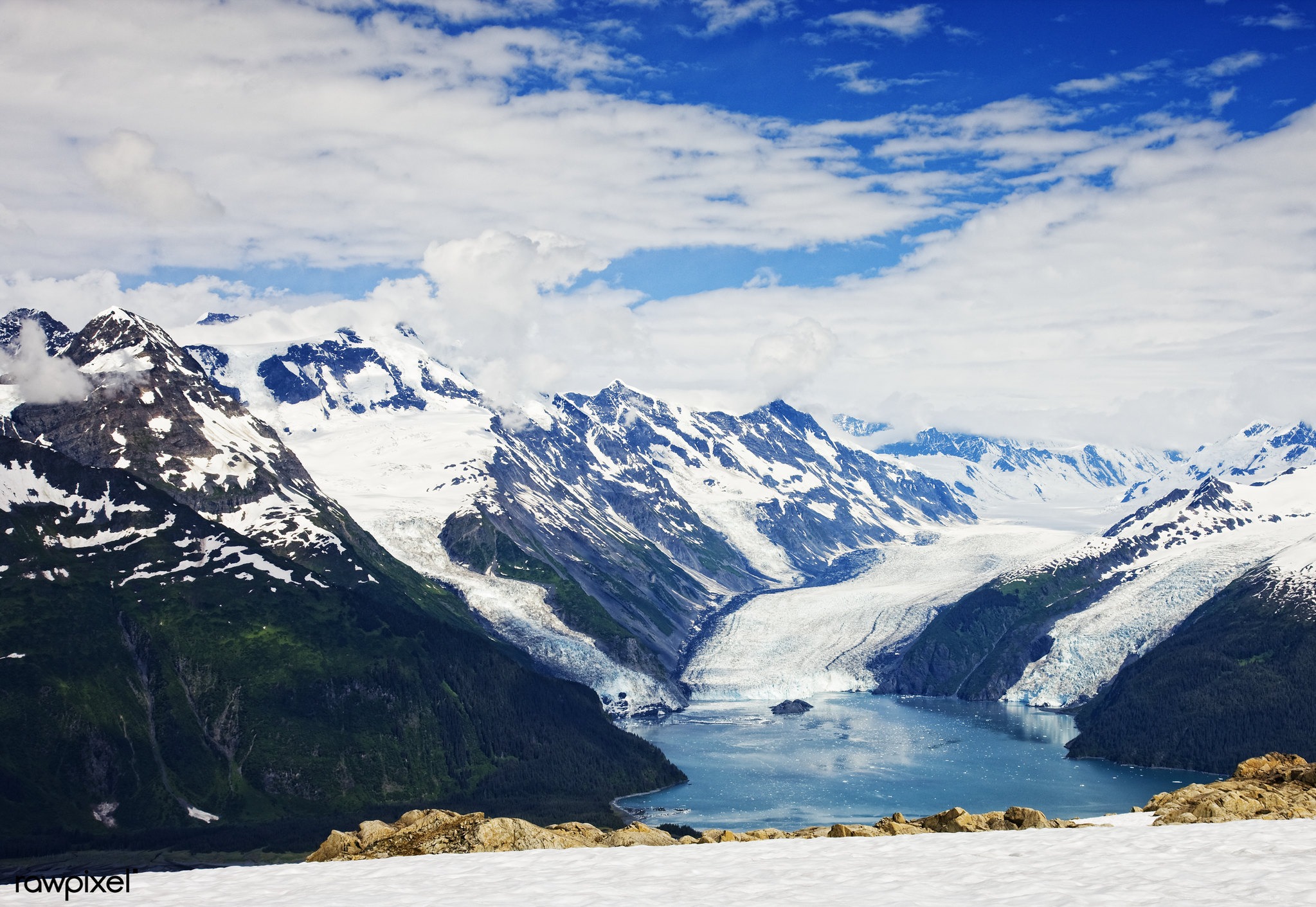
Prince William Sound is a vast inland sea located on Alaska’s southern coast, opening into the Gulf of Alaska. Approximately 145–160 km wide, stretching east of the Kenai Peninsula and at the foothills of the Chugach Mountains, this area has around 150 glaciers and a coastline of 3,500–3,800 miles (5,600 km). Coastal towns such as Valdez, Cordova, and Whittier open the doors to both commerce and tourism, while deep fjords, small islands, and ice-covered peaks offer nature enthusiasts landscapes of unique beauty.
This region is known for its rich marine and terrestrial wildlife; it hosts dense populations of marine mammals as well as over 220 bird species and more than 30 terrestrial mammal species. Humpback whales, orcas, sea otters, seals, sea lions, and river otters are frequently observed, while on land, black and brown bears, moose, and mountain goats can be seen. In addition, the tidewater glacier views of the sound are mesmerizing; watching these glacier masses slowly advance into the sea and break off in “calving” events is a unique experience.
Prince William Sound offers daily boat tours, kayaking trips, and jet ski adventures departing from port towns such as Valdez and Whittier. On tours from Valdez, you can encounter large glaciers like Meares Glacier and observe marine life full of sea otters and whales. Whittier, only an hour away by road (through the Anton Anderson Tunnel) from Anchorage, provides easy access to the sound with its ice-resistant port, where nature and marine tours are also in high demand.
Historically rich as well, Prince William Sound was shaken by tsunamis during the 1964 Alaska Earthquake and suffered severe environmental damage in 1989 with the Exxon Valdez oil tanker disaster. This catastrophe near Bligh Reef resulted in the release of 11 million gallons (about 41 million liters) of crude oil into the sea, causing long-term devastation to high populations of birds, mammals, and fish. This event led to strengthened maritime transportation regulations and the introduction of double-hull tankers in the United States as an environmental measure.
Today, thanks to laws protecting the wilderness and sustainable tourism projects, Prince William Sound stands out both ecologically and culturally. This valuable inland sea offers travelers peace and discovery as a meeting point of polar fjords, glaciers, harbor towns bearing traces of historical events, and rich wildlife.
11. Homer (art galleries, fishing)
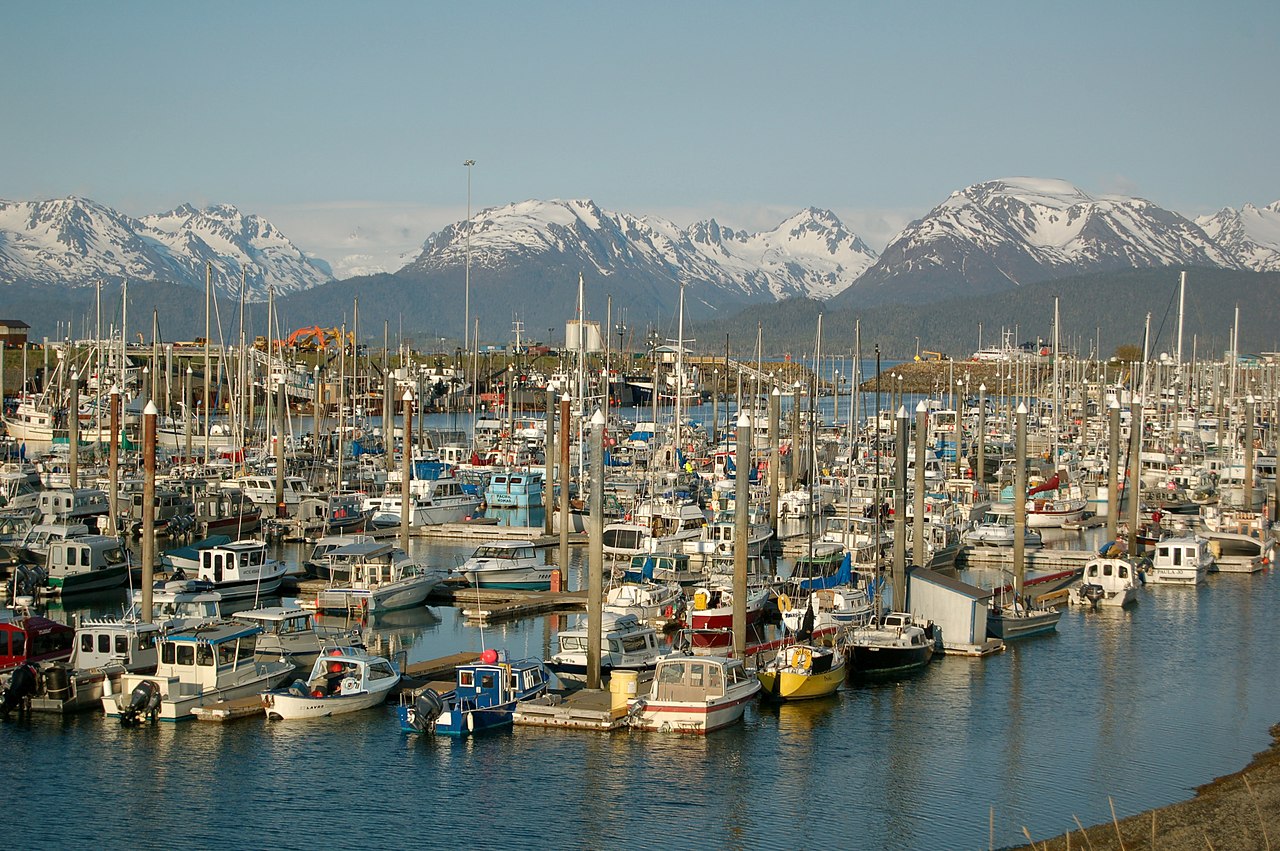
Homer, Alaska, known as “The End of the Road,” is a colorful and lively town embracing the natural wonders of Kachemak Bay. Thanks to the art galleries and theaters lined up along Pioneer Avenue, the town has turned into a kind of mini art island. Places such as Ptarmigan Arts, Fireweed Gallery, Bunnell Street Arts Center, and Art Shop Gallery offer pottery, jewelry, oil paintings, photography, and Alaska Native handicrafts. In addition, the Pratt Museum presents exhibits on the region’s natural history and local culture, while the Alaska Islands & Oceans Visitor Center brings visitors closer to nature with eco-friendly interactive tours.
Famous for its fishing, Homer is one of the world’s leading centers especially for halibut fishing. Daily tours on fishing boats in the harbor offer the chance to catch giant halibut. The area also has cafes serving fresh seafood and classic venues like the Salty Dawg Saloon. The town also draws attention with its local beer culture; Homer Brewing Company stands out with its rich variety of beers. Combining art and fishing with natural beauty, Homer is an ideal Alaska stop filled with both cultural and local experiences.
12. Sitka (with Russian historical heritage)
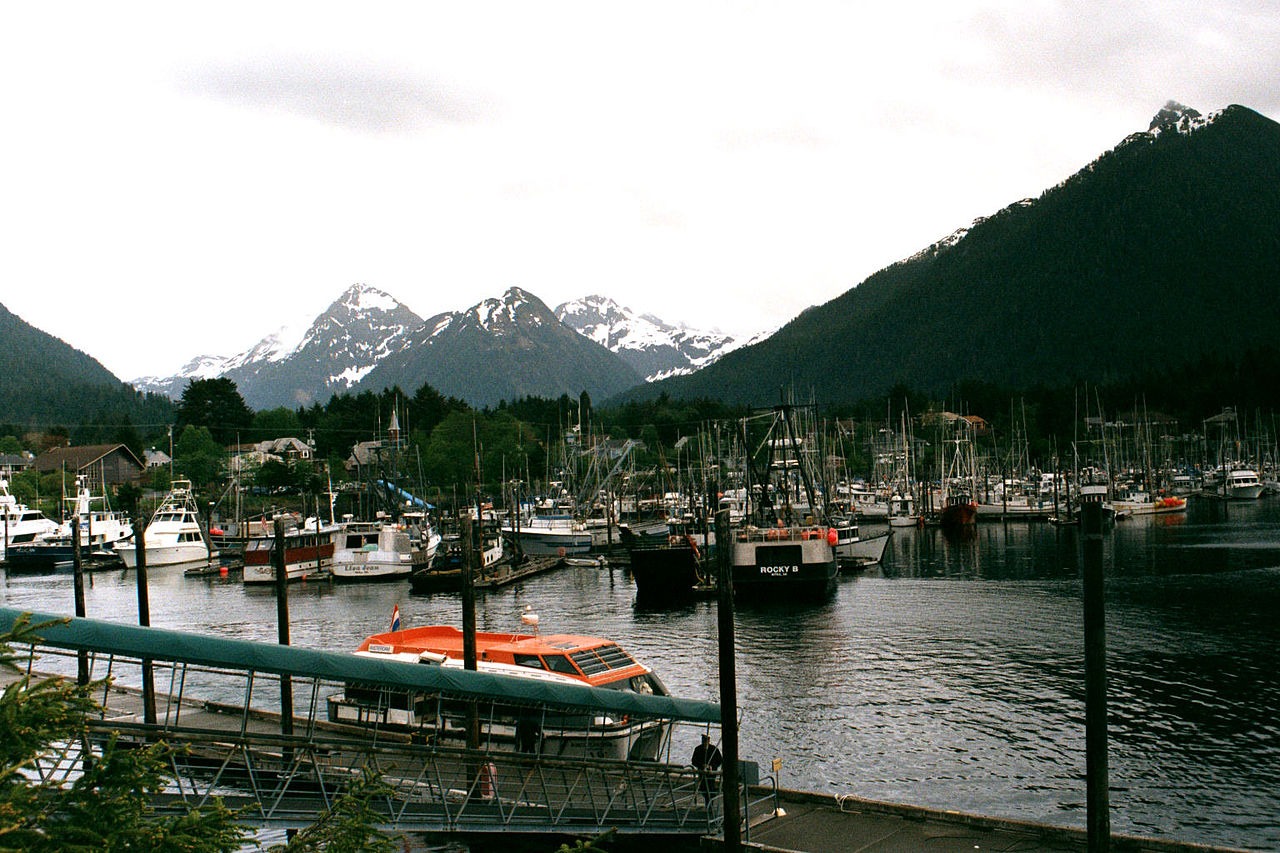
Sitka, Alaska, has witnessed a unique cultural fusion with the thousands of years of history of the Tlingit Natives and as the capital of the Russian America Colony, called “New Archangel” by the Russians between 1799 and 1867. Concrete traces of Russian colonization are preserved with structures such as St. Michael’s Russian Orthodox Cathedral built in 1848 (notable for its green domes and golden crosses) which still adorns the city’s skyline, the Russian Bishop’s House in the Tobacco District, the old commercial building No. 29, and Fortress of the Bear. In addition, Baranof Castle State Historic Site on Castle Hill, where the grand ceremony of Alaska’s transfer to America took place in 1867, awaits those who want to relive this historical moment.
Today, Sitka offers visitors both a discovery full of history and the opportunity for fascinating nature activities, with its balanced identity established between this deep Russian heritage and the Tlingit Native culture. The totem poles exhibited at Sitka National Historical Park, Tlingit handicrafts, and interpretive tours conducted by the NPS bring together the past and the present. In places such as the still actively used Russian Orthodox cathedral and the Bishop’s House, both worship and guided tours are available; moreover, it is possible to experience Russian folklore and music through cultural events such as the New Archangel Dancers. All these features make Sitka one of the richest stops in Alaska in terms of history, culture, and nature.
13. Wrangell-St. Elias National Park
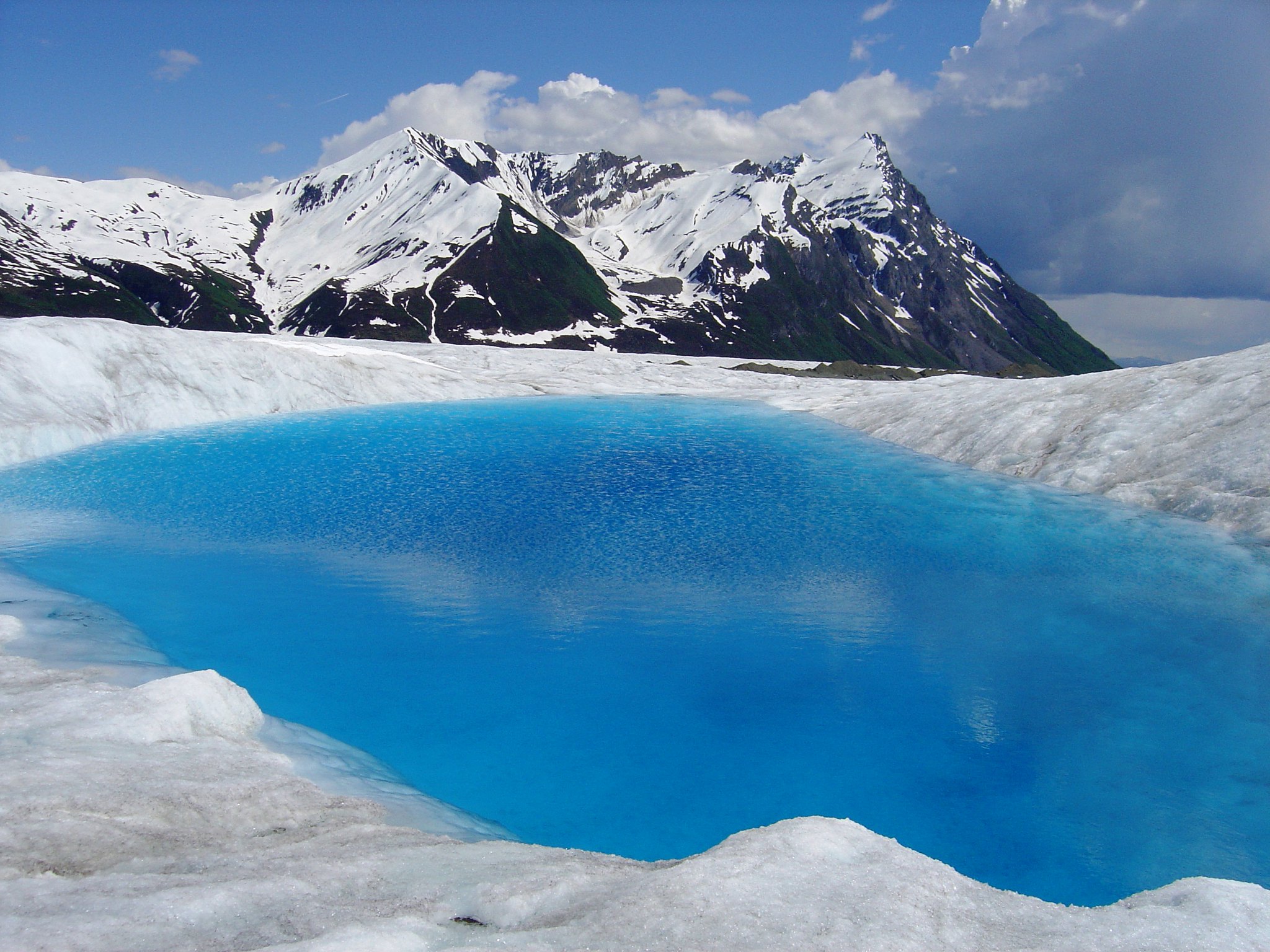
Wrangell–St. Elias National Park and Preserve, with an area of approximately 13.2 million acres (about 53,000 km²), is the largest national park in the United States — equal in size to Yellowstone, Yosemite, and Switzerland combined. Here, nine of the highest mountains in North America (for example, Mount St. Elias at 5,489 m and many peaks over 5,000 m), massive glaciers (Malaspina, Hubbard, Nabesna), and active volcanic areas coexist. The park encompasses four major mountain ranges: the Chugach, Wrangell, St. Elias, and Alaska Ranges; 60% of its terrain is permanent glaciers, and 66% is under wilderness protection. In 1979, the Kluane/Wrangell–St. Elias region was designated a UNESCO World Heritage Site.
The park offers unique dynamics for wildlife and adventure enthusiasts. Large mammals such as Dall sheep, caribou, moose, brown and black bears, along with wild birds, share this vast wilderness habitat. Visitors can experience uninterrupted contact with nature through activities like flightseeing, glacier hiking, rafting, and backcountry camping in areas accessed via Copper Center, Nabesna, and McCarthy roads. In addition, restored historic structures, railroads, and cultural experiences blending with pristine nature can be found in places such as the Kennecott mining town, McCarthy, and the Nabesna Valley. The park’s challenging nature allows for both light hiking trails and extreme mountain climbs; it is an impressive experience for those seeking a true wilderness exploration.
14. Valdez (glaciers and outdoor sports)
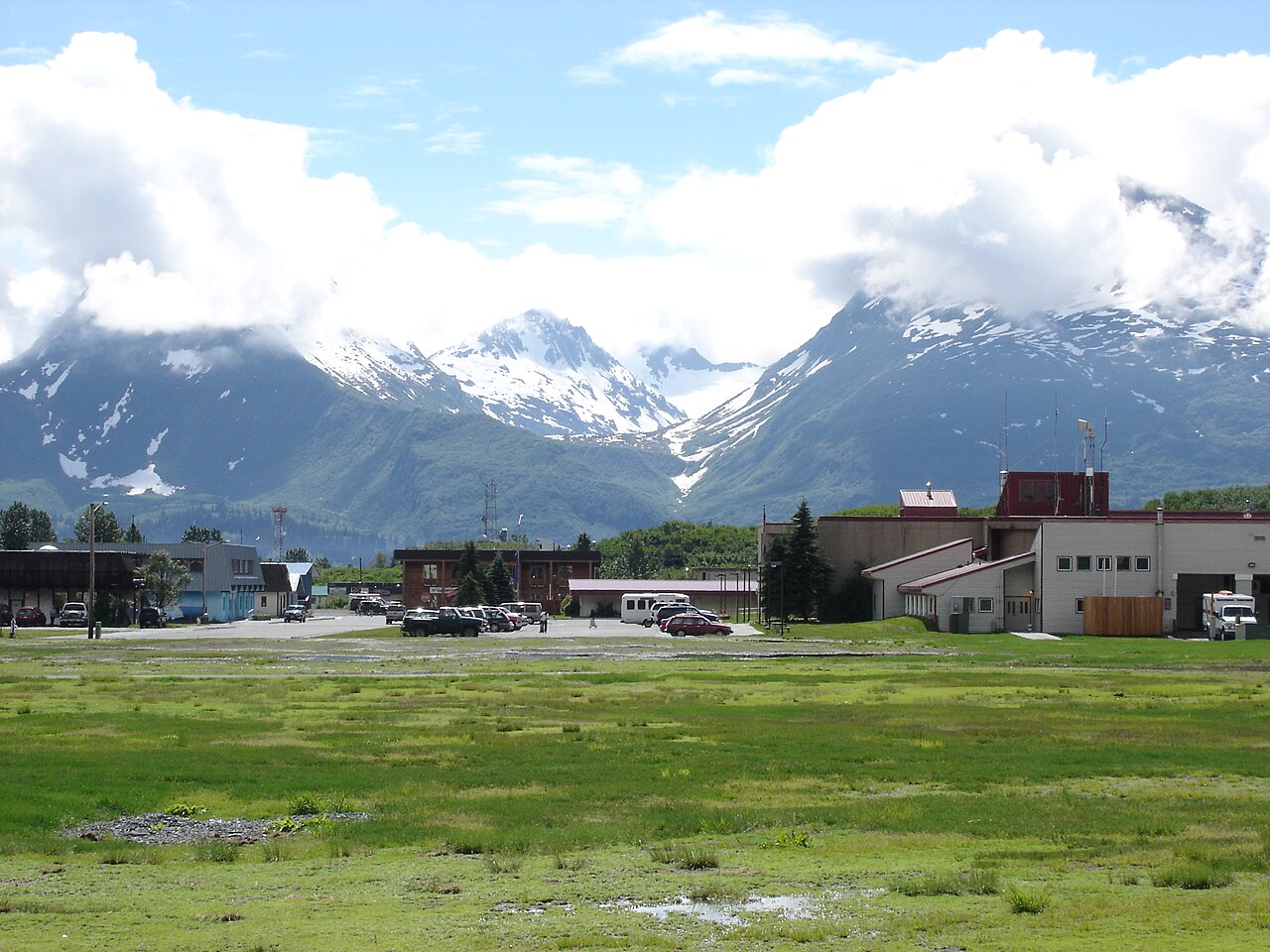
Valdez, Alaska, is a port town located at the eastern end of Prince William Sound, nestled among the Chugach Mountains, and holds the title of “the snowiest city in the world.” The region hosts first-class glaciers, fjords, rivers, waterfalls, and wildlife. Especially Valdez Glacier Lake offers colorful waters filled with icebergs in the summer for kayaking routes, while in winter it turns into a “glacier-covered natural wonder” equipped for activities such as ice skating, snowshoeing, or fat biking.
Glacier explorations are at the heart of Valdez. Tidewater glaciers such as Columbia and Meares can be discovered on day boat tours and with kayak tour guides. Valdez Glacier Tour programs promise unforgettable moments with the experience of entering ice caves by canoe; companies like Anadyr Adventures offer these tours in summer across a wide range from lobby-to-paddle trips and easy routes suitable for children to long adventure-filled expeditions. In addition, rafting on the slopes, fishing trips, and hiking routes with dramatic views (Keystone Canyon, Bridal Veil, and Horsetail Falls) create extra appeal for outdoor sports enthusiasts.
15. Chugach State Park
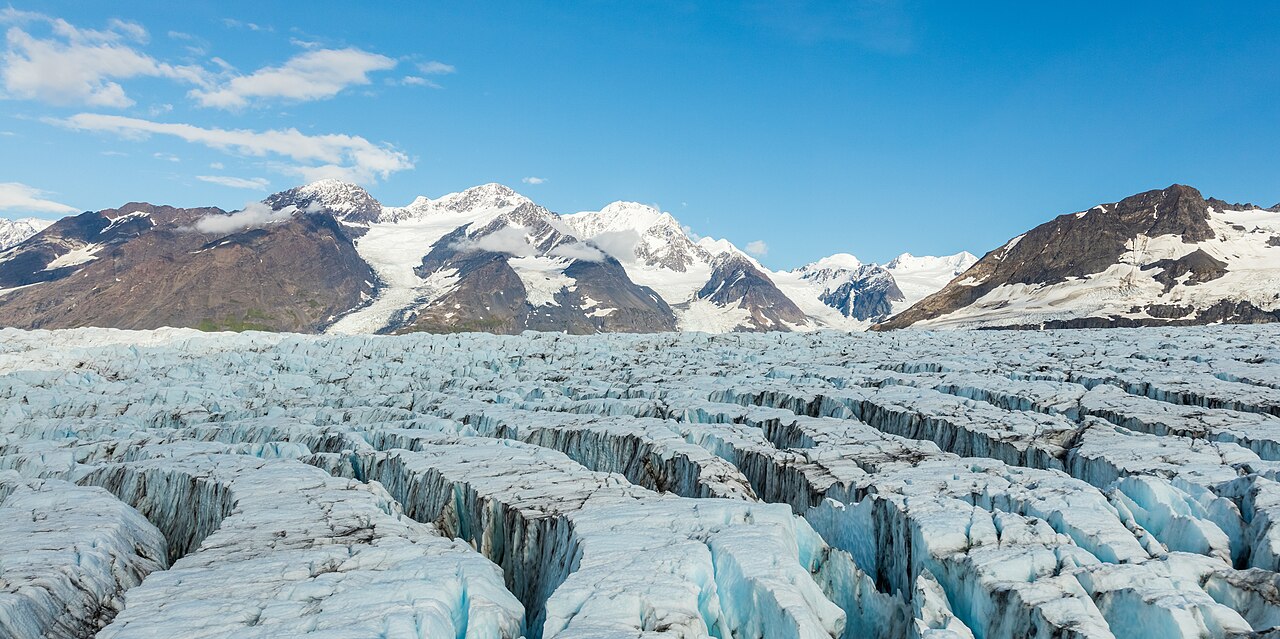
Chugach State Park is a vast natural area of approximately 495,000 acres located just east of the city of Anchorage, making it one of the largest state parks in the United States. Surrounded by foothills, glaciers, river valleys, forests, lakes, and coastlines, this oasis is only seven miles from the city center. Activities such as canoeing on Eklutna Lake, rafting on the Eagle River, cross-country skiing, or fat biking continue throughout the year. Enriched in winter with camping, snowshoeing, ATV riding, horseback sleigh rides, and fishing, the park appeals to every level with routes ranging from flat trails to challenging summit paths.
One of the park’s most popular hiking trails is the Flattop Trail, starting at Glen Alps: this 1.5-mile trail offers a panoramic view of Anchorage and is one of Alaska’s most climbed mountains. For those seeking deeper exploration, multi-day trails such as the Crow Pass Trail provide opportunities to encounter high mountain passes and glaciers. Rich in wildlife as well, the park allows for observing many species in their natural environment, including moose, black and brown bears, mountain goats, Dall sheep, river fish, birds, and the rarely seen wild cats. This natural area right next to Anchorage is a craft nature paradise that offers exploration opportunities for everyone, appealing to different seasons and interests.
16. Haines (wildlife and cultural festivals)
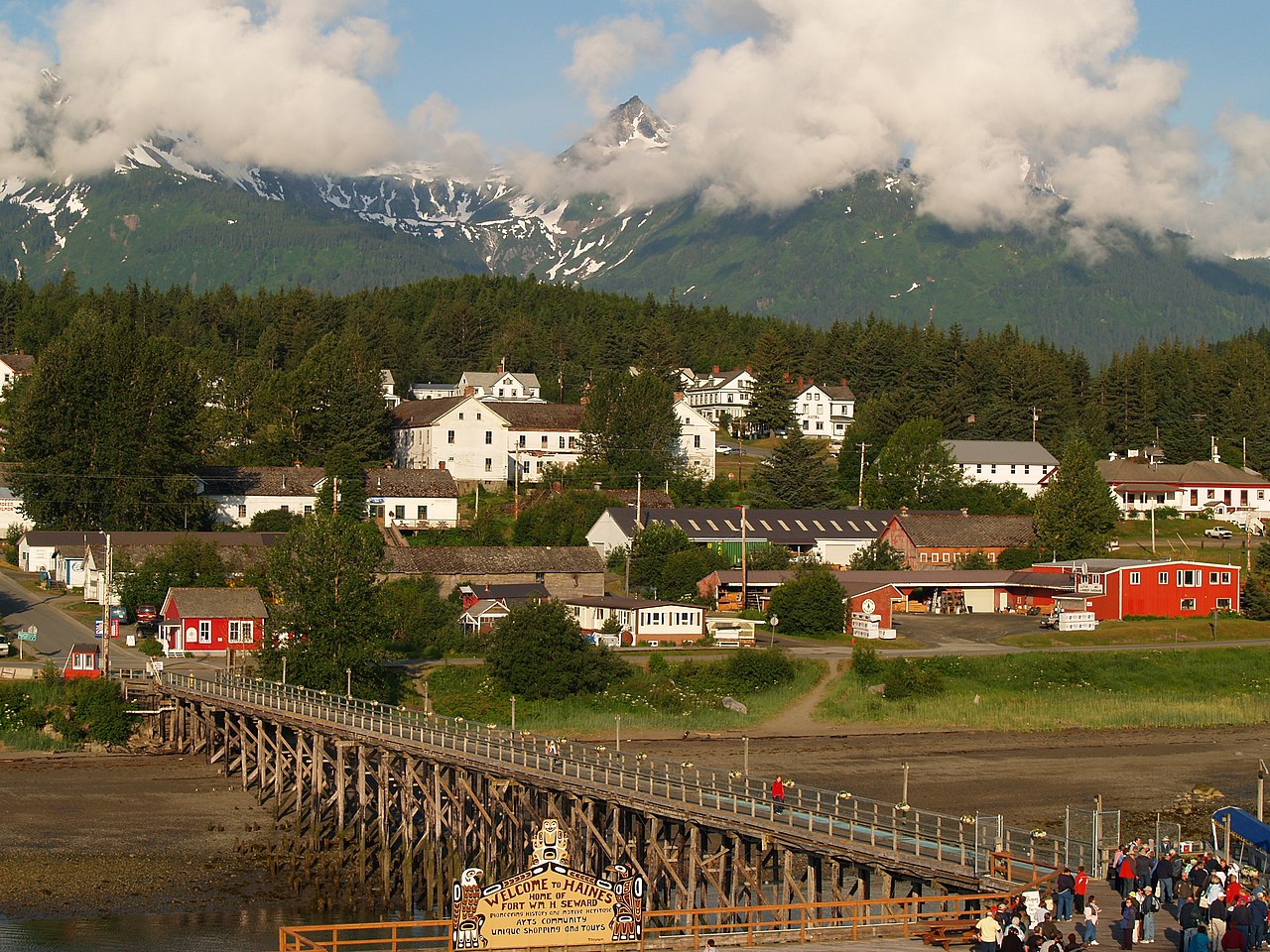
Haines, Alaska, known as the “Adventure Capital,” is located in the heart of the wilderness. The area hosts rich wildlife including moose, brown bears, seals, and especially massive bald eagles. Water tours, safari tours, or flightseeing around Chilkoot Lake and River offer visitors safe, nature-filled encounters with the region’s wild animals. Those who follow the rhythm of nature have the chance to observe brown bears feeding on salmon by walking along the “Bear Highway” route on the Chilkat River, especially in the fall.
Haines also hosts unique cultural events. The Alaska Bald Eagle Festival, held every November, turns into a nature celebration as thousands of eagles gather in the Chilkat River Basin following the salmon run. The festival includes scientific presentations, photography workshops, art exhibitions, local music events, and nature walks, appealing to both nature lovers and culture enthusiasts. In addition, the Tlingit Native culture is kept alive in places such as the Sheldon Museum, Fort William H. Seward, and Alaska Indian Arts and Pendik art centers, while events like the Silver Salmon Derby, Beerfest, and the late-summer Farmers Market keep Haines vibrant throughout the year.
Haines is an Alaska epic that combines wilderness and rich cultural experiences, offering discoveries in nearly every season.
17. Skagway (traces of the Gold Rush era)
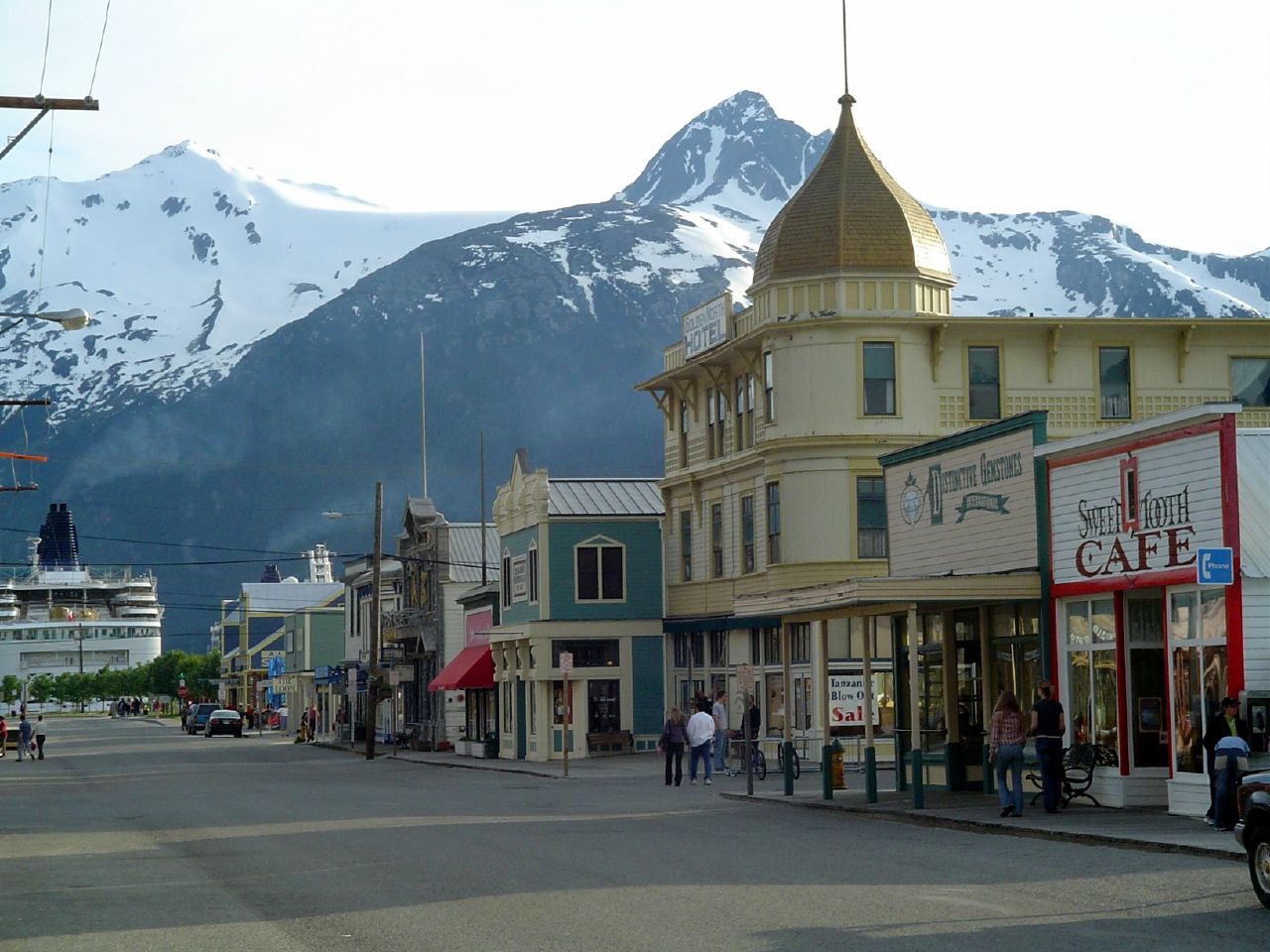
Skagway, Alaska, was one of the busiest transit points during the Klondike Gold Rush of 1897–98. Called “the place where the north wind blows” by the Tlingit Natives, Skagway became a city of 15,000–20,000 people within a few years after gold was discovered. The historic buildings, bars, saloons, and old warehouse structures lined up along Broadway Avenue still allow visitors to experience that era step by step today, either as museums or restored commercial establishments. The Klondike Gold Rush National Historical Park, established in 1976, aims to preserve traces of the gold rush through both the Chilkoot and White Pass trails and the historic structures within the town.
One of the famous events of the period was the “Shootout on Juneau Wharf” between Soapy Smith and Frank Reid on July 8, 1898; this duel became a turning point against the city’s crime organizations. Today, visitors can vividly feel this bold and challenging era by exploring restored buildings such as Soapy Smith’s former saloon Jeff Smith’s Parlor, the graves in Gold Rush Cemetery, trips on the White Pass & Yukon Route narrow gauge railway, and hikes on trails such as the Chilkoot Trail. Additionally, with historical theater events like “The Days of ’98 Show” that reenact the era, Skagway brings the cultural heritage of the Gold Rush period to the present day in both an entertaining and educational way.
18. Ketchikan (totem poles and Native culture)
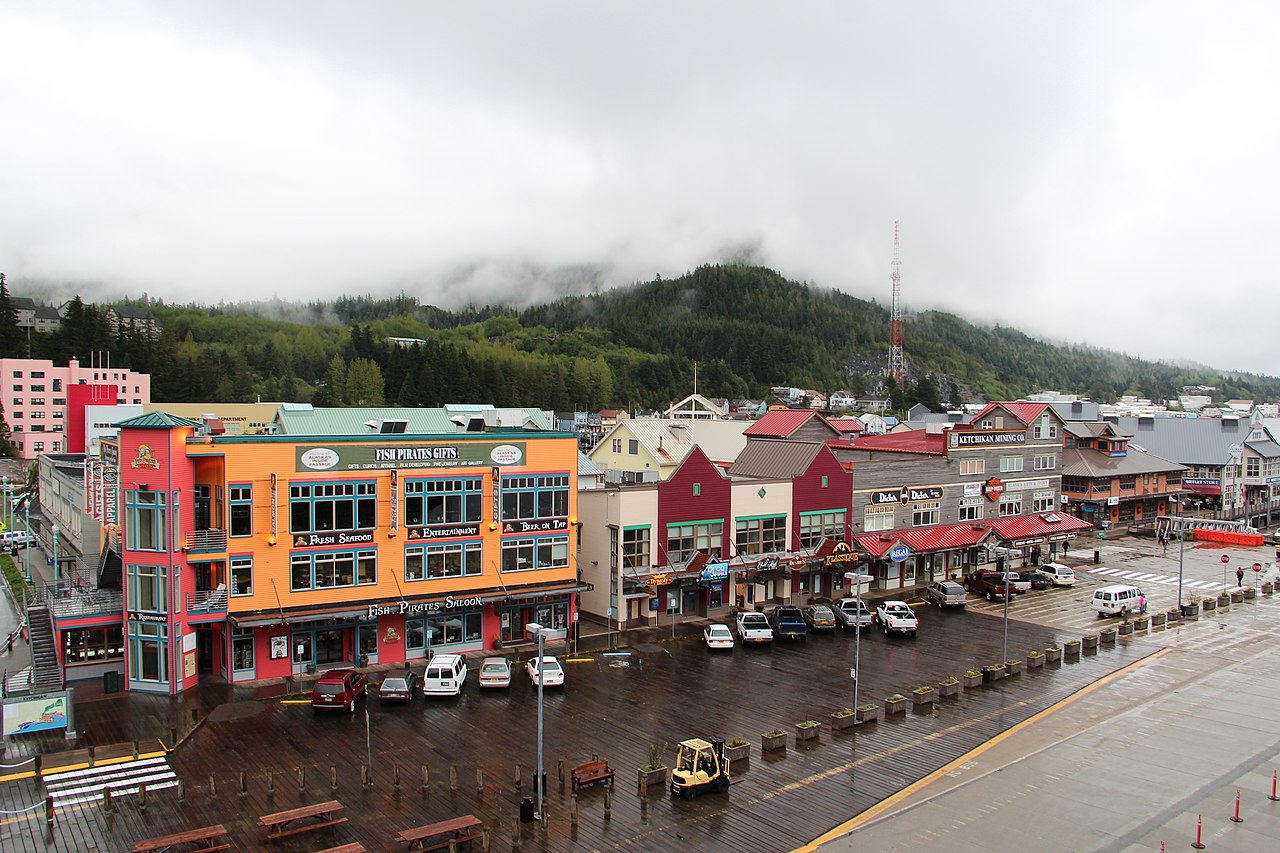
Ketchikan, Alaska, is known not only as the “Salmon Capital” but also as home to the world’s richest collection of totem poles. In the city center, the Totem Heritage Center exhibits 33 historic poles from the 19th century, preserving the artistic heritage of the Tlingit, Haida, and Tsimshian tribes, and visitors walking outdoors can learn how these totems were used in the past. In addition, the poles relocated and revived at Saxman Totem Park are repainted and restored every year by tribal artisans; tribal houses and dance performances also accompany visitors there.
Totem Bight State Historical Park near the city also offers impressive examples of Tlingit and Haida art: wooden tribal houses, hand-carved poles, and the natural rainforest background combine to create a mystical atmosphere. The potlatch ceremonies, kinship structures, and spiritual bond with nature in Ketchikan’s Native culture can be felt in every totem pole and exhibit through Tlingit culture; the totems are not just aesthetic objects but also symbolic expressions of history, identity, and ritual.
19. Talkeetna (gateway to Denali)
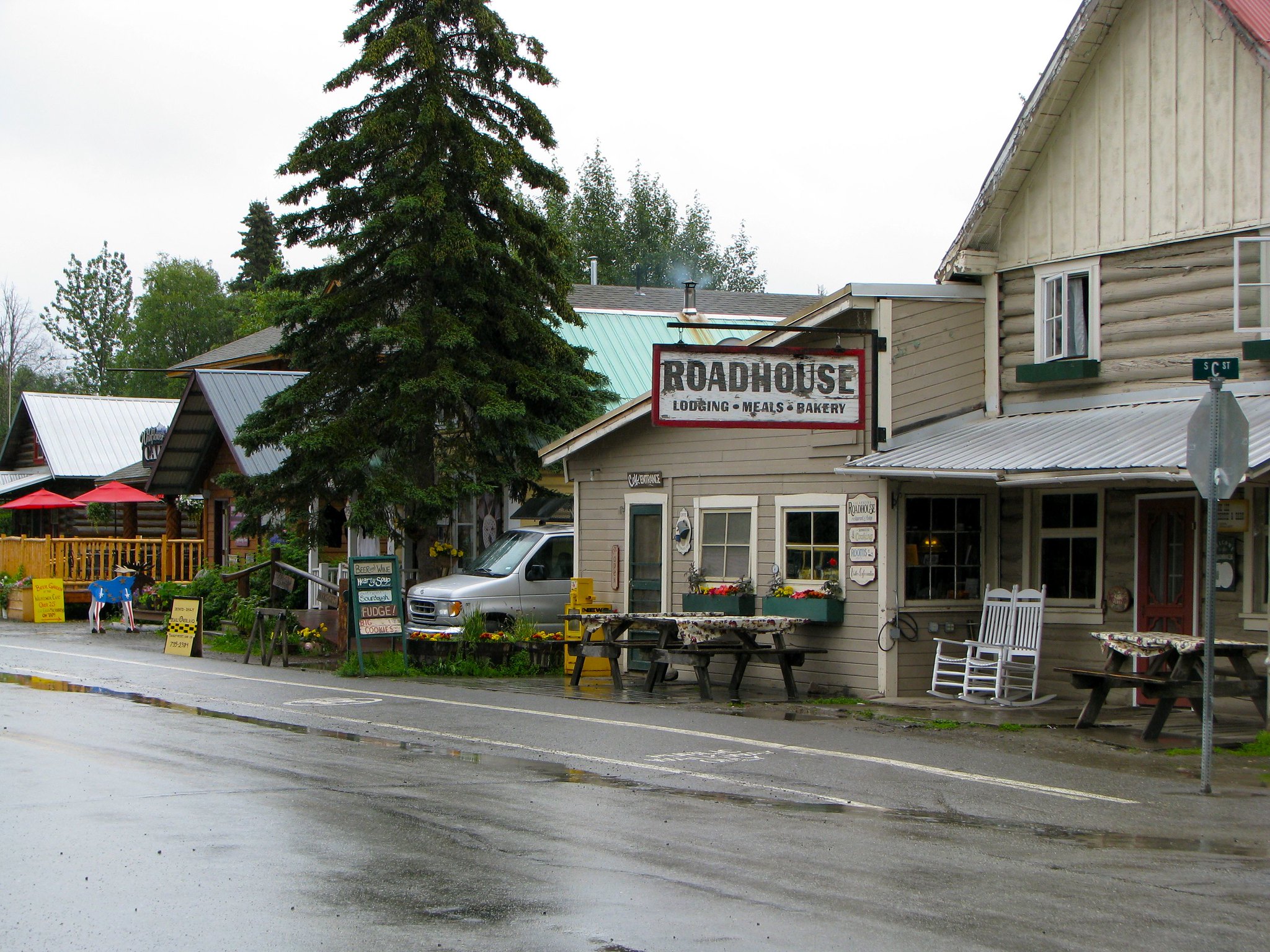
Talkeetna, Alaska, is a small but fascinating town located at the southern gateway of Denali National Park. Established in 1916 as a regional hub of the Alaska Railroad, the town is now preserved under the National Historic District, with many of its buildings dating back to the early 1900s — historic structures such as the Talkeetna Roadhouse and Nagley’s General Store stand out. The town sits at the confluence of the Susitna, Chulitna, and Talkeetna rivers, and is only about 2.5 hours from Anchorage and approximately 3 hours from the entrance to Denali. Additionally, Talkeetna is a gathering and service point for mountaineers climbing Denali — the Denali National Park ranger station located here is the first stop for climbers before starting their routes.
Talkeetna is also a hub for adventure tourism. In the summer, visitors can enjoy nature activities such as flightseeing with Denali views, jet boat tours on the river, fishing (salmon, trout), and canoeing/kayaking. In winter, the Northern Lights (aurora), snowmobiling, dog sledding, and local ski races such as the Oosik Classic are popular. The town center is also full of art and local flavors; handmade souvenirs, hearty cuisine, and a warm atmosphere are characteristic features of Talkeetna.
Visiting Talkeetna is a unique opportunity to experience both the excitement of transitioning to Denali and the spirit of the Alaskan frontier — history, nature, and culture intersect here.
20. Arctic Circle region (Arctic Circle experience)

The Arctic Circle region, located in the north of Alaska, offers a unique experience both geographically and culturally. Beginning just below the Arctic Circle latitude (≈66° 33′ N), this region has a unique atmosphere where the “midnight sun” occurs in summer, when the sun does not set, and the “polar night” occurs in winter, when darkness lasts for days. Only once you cross north of the 66th parallel does the sun not set on June 21 and does not rise on December 21 — these natural events are reinforced by ceremonial celebrations called the Arctic Circle Crossing.
Many visitors explore this region by starting in Fairbanks and reaching points such as Coldfoot and Prudhoe Bay via “fly-drive” or entirely by road along the Dalton Highway. During these journeys, tundra, rivers, permafrost terrain, and rarely seen Arctic fauna — especially species such as caribou and musk ox — can be observed. In winter, the region under the Aurora Oval provides impressive views of the Northern Lights; winter aurora tours offer the chance to spend the night in warm cabins and watch the Northern Lights in the “polar darkness.”
The Arctic Circle experience is not only a natural discovery — it also involves witnessing the lifestyle of Alaska Natives in the area. It is possible to encounter Iñupiaq culture and festivals (for example, Nalukataq) in settlements such as Utqiagvik, as well as interpretive sites along the Dalton Highway and the Arctic Interagency Visitor Center in Coldfoot. In addition, the “Arctic Circle Crossing” certificate given to participants during the journey emphasizes that this experience is special not only visually but also symbolically.
This unforgettable journey is filled with lifelong memories for those who want to step to the far edge of nature — whether in summer with uninterrupted daylight or in winter with the dance of bright auroras. Every visit to this region becomes an exploration that makes one deeply feel the spirit of Alaska’s “Last Frontier.”.
